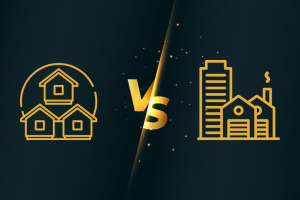Savvy restaurant owners are constantly seeking innovative solutions to streamline their operations, reduce overhead costs, and improve customer satisfaction. Automation in the restaurant industry has emerged as a call to efficiency, transforming traditional practices with modern technology. From digital kiosks to smart kitchen tools, automated devices are not only enhancing the dining experience but also making restaurant management a breeze. Here, we discover groundbreaking restaurant automation systems and tools that are revolutionizing the way restaurants operate.

7 Restaurant Automation Systems and Tools
Restaurant automation systems and tools are designed to streamline various tasks in a restaurant, such as managing reservations, tracking inventory, taking orders, making payments, and more. Here are seven restaurant automation systems and tools that are worth considering:
1. Digital Ordering Systems
The rise of digital ordering systems marks a significant shift in how restaurants handle customer orders. Gone are the days of long queues and human error in order taking; these systems allow customers to place orders through digital interfaces, either via in-house tablets or through their own smartphones.
The benefits are manifold: quicker service, reduced wait times, and a streamlined ordering process that allows staff to focus more on customer service and less on mundane tasks. These systems also gather data on customer preferences, enabling restaurants to better tailor their offerings and promotions effectively.
2. Smart Inventory Management Systems
Every restaurant owner knows that managing inventory is one of the crucial insider secrets to opening a restaurant and being successful. Smart inventory management systems are here to take the guesswork out of this essential task. These systems track stock levels in real-time, predict inventory needs based on trends, and even place orders automatically when supplies run low.
This not only ensures that the kitchen never runs out of necessary ingredients but also significantly cuts down on waste, saving money and improving operational efficiency. The real-time data provided helps restaurant managers make informed decisions quickly, adapting to changes in customer demand without missing a beat.
3. Automated Restaurant Hood Cleaners
When it comes to maintaining a safe and hygienic kitchen, automated restaurant hood cleaners play a pivotal role. A clean kitchen hood is essential for preventing fire hazards and ensuring optimal ventilation, crucial in busy restaurant environments. Many great companies offer a seamless solution to this often overlooked yet critical aspect of restaurant maintenance.
By integrating these systems, restaurants can ensure regular and thorough cleaning of exhaust systems, dramatically reducing the risk of fire and enhancing air quality. Plus, the automation of such a demanding task allows kitchen staff to focus on what they do best—cooking delightful meals for their patrons.
4. Automated Beverage Dispensing Systems
Automated beverage dispensing systems are revolutionizing the bar and drink service in restaurants. These systems precision-pour drinks, ensuring consistent quality and taste, whether it’s a simple soda or a complex cocktail.
The speed and accuracy of these dispensers reduce wait times for customers and minimize beverage waste, leading to increased profit margins. Furthermore, they allow bartenders to focus on customer interaction and service rather than the mechanics of drink mixing, enhancing the overall customer experience.
5. AI-Driven Dynamic Pricing Tools
In a bid to maximize revenue and adapt to changing market conditions, AI-driven dynamic pricing tools are growing in popularity in the restaurant industry. These tools analyze multiple factors such as demand, time of day, and even weather conditions to adjust menu prices in real-time.
This not only helps in optimizing revenue during peak hours but also attracts customers during slower periods with attractive pricing. By intelligently adjusting prices, restaurants can better manage customer flow and revenue, making operations both more efficient and profitable.
6. Energy Management Systems
Running a restaurant involves a significant amount of energy consumption, from kitchen appliances to lighting and HVAC systems. Energy management systems automate the process of monitoring and controlling energy use within a restaurant.
These systems can automatically adjust lighting, regulate HVAC systems, and turn off equipment when not in use, significantly reducing energy costs. In addition, they contribute to a restaurant’s sustainability goals by reducing its overall carbon footprint, an aspect increasingly important to today’s eco-conscious consumer.
7. Robotics in the Kitchen
The incorporation of robotics in the kitchen is perhaps one of the most futuristic yet increasingly realistic aspects of restaurant automation. Robots can easily be programmed to perform repetitive tasks such as flipping burgers, chopping vegetables, or even cooking entire meals. This not only speeds up the food preparation process but also ensures consistency in food quality.
While the idea of robots in the kitchen might seem impersonal, they free up human staff to engage in the more complex, creative tasks and customer service, thus optimizing the workforce and enhancing the dining experience.
Conclusion
We have listed above some of the restaurant automation systems and devices available in the market. When choosing the right automation tool for a restaurant it is important to consider factors such as integration with existing systems, ease of use, reputation, and pricing.
By leveraging these automation systems and tools, restaurants can optimize their operations, reduce labor and food costs, minimize errors, and provide a better customer experience.


